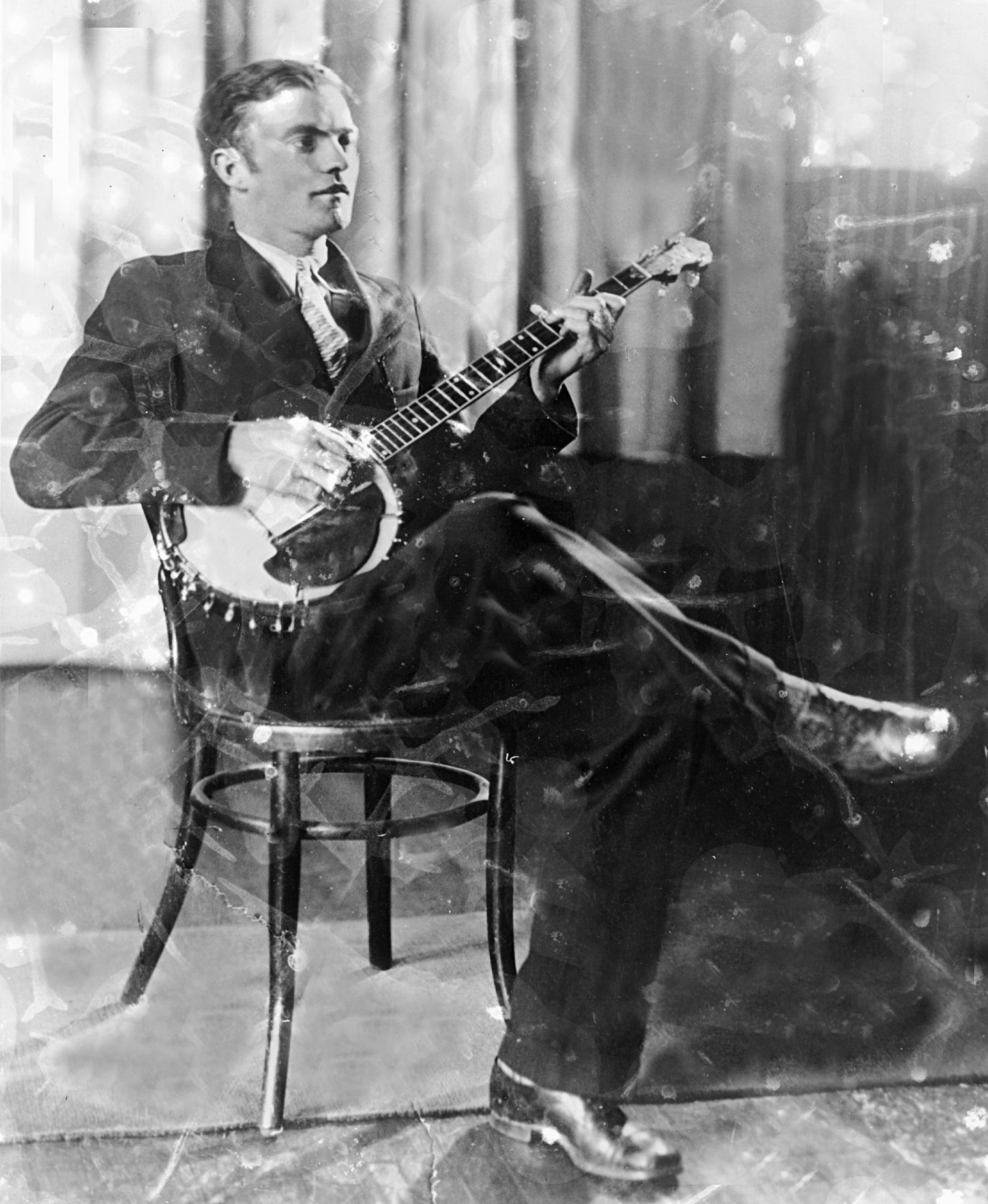
Talk about a dark and spooky song! In the Pines has it all: a young girl who shivers when the cold winds blow, and then sells herself to the men in the mines. As if that’s not quite bad enough, she then gets her head cut off when she fell under the driving wheel of a train. After all that, she didn’t even get a proper burial because “her body has never been found.”
Originating around the time of the Civil War, the history of In the Pines is entangled with such songs as The Longest Train I Ever Saw, Where Did You Stay Last Night, Look Up, Look Down That Lonesome Road, Don’t Tell Me No Lie, and Black Girl.
It was Dock W alsh who made the first recording of In the Pines. He walked almost 300 miles from his home in Wilkesboro, NC, to Atlanta, Georgia, to audition for Columbia Records. His mighty efforts were not in vain, because he managed to record In the Pines on April 17, 1926. On April 15, 1930, Clayton McMitchen’s Georgia Wildcats recorded a version called Grave in the Pines. Fiddlin’ Arthur Smith recorded the song in room 121-123 of the Andrew Jackson Hotel in Rock Hill, South Carolina, on September 27, 1938. In the Kimball Hotel in Atlanta on October 2, 1941, Bill Monroe recorded it as a duet with Clyde Moody of Marion, North Carolina. Some eleven years later, in the Tulane Hotel in Nashville, Bill Monroe recorded it again, this time as a duet with Jimmy Martin on July 18, 1952.
alsh who made the first recording of In the Pines. He walked almost 300 miles from his home in Wilkesboro, NC, to Atlanta, Georgia, to audition for Columbia Records. His mighty efforts were not in vain, because he managed to record In the Pines on April 17, 1926. On April 15, 1930, Clayton McMitchen’s Georgia Wildcats recorded a version called Grave in the Pines. Fiddlin’ Arthur Smith recorded the song in room 121-123 of the Andrew Jackson Hotel in Rock Hill, South Carolina, on September 27, 1938. In the Kimball Hotel in Atlanta on October 2, 1941, Bill Monroe recorded it as a duet with Clyde Moody of Marion, North Carolina. Some eleven years later, in the Tulane Hotel in Nashville, Bill Monroe recorded it again, this time as a duet with Jimmy Martin on July 18, 1952.
In the Pines is a good song to let us talk about how to “season” a song with different emotional spices. As you might guess, this song is not the kind of a ditty you would sing at a child’s birthday party amidst silly hats, colorful balloons, and smiling faces. No, the lyrics of this mournful song reek of lonesome graveyards and the smell of death. But the melody that is often used in this song is kind of like a bland vanilla, without much flavor.
Let’s look for a moment at the music of “In the Pines,” written out here in the key of D. Even if you don’t read music, you should be aware that a D scale is made up of these notes: D, E, F#, G, A, B, C#, D. If we give these notes of the D scale numbers, it would be 1=D, 2=E, 3=F#, 4=G, 5=A, 6=B, 7=C#, 7=D.
 The third note of a scale (in this case, F#), is usually the “happy” note of the bunch. All we have to do to add some lonesome spice to a song like In the Pines, is to flatten that 3rd (F#) one half step or one fret. That means instead of playing an F#, you would simply play an F. Depending on how much spice you want to add, you’ll see that there are five F#s in this short song. You can take your pick which of those F#s you want to flatten, depending on how much emotion you want to evoke. Remember that you don’t have to play it the same way, over and over.
The third note of a scale (in this case, F#), is usually the “happy” note of the bunch. All we have to do to add some lonesome spice to a song like In the Pines, is to flatten that 3rd (F#) one half step or one fret. That means instead of playing an F#, you would simply play an F. Depending on how much spice you want to add, you’ll see that there are five F#s in this short song. You can take your pick which of those F#s you want to flatten, depending on how much emotion you want to evoke. Remember that you don’t have to play it the same way, over and over.
Basically, when you flatten the third note of a scale, you’re turning a major scale into a minor scale. A major scale is like when the sun is shining, and when you play the minor scale, the sun goes behind a cloud and the winds start picking up. It’s sometimes interesting to color your music like a partly cloudy day — some sun mixed with clouds.
Have fun spicing up In the Pines, or any song, for that matter.

